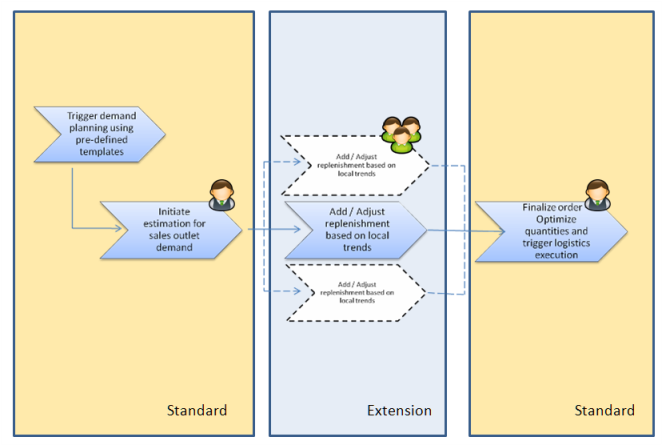Have you heard about the chaos in apple stores during their product release?
People standing in long queues for hours together just to buy an Apple product, only to realize that the retail outlet ran out of stock. It was not much of a problem for Apple in the past. But with Android closing in on its heels, every customer missed, is a customer lost.
If only companies could predict the insane demand for their products accurately.
The advantages of a sound replenishment strategy while obvious in this scenario, is universally applicable for all retail vendors. It helps keep their safety stock low, still ensuring a better quality of customer service by helping serve every customer. There are multiple ways in which replenishment needs are predicted. Push, pull, hybrid strategies and more.
Push strategy is supply driven and something Apple employs (my best guess.). Pull strategy is demand driven and this usually applies to most FMCG products. Some companies employ a combination of two with a good amount of mathematical prediction models thrown in. Each has its strengths and weaknesses.
In SAP Retail, typically buyers estimate the demand in their retail outlets, enter the demand details and send a purchase request. If buyers need to get estimates from retail outlets, they can collaborate using emails , fax etc ., with store managers in different locations, collect their individual store demands and employ this data along with demand forecast models to predict demand.
This is a typical edge process scenario where SAP NW BPM can be used as a process extension for a standard demand based procurement process. Automating this process also brings great value as you have real time data to predict demand trends, analyze performance of outlets and run many more sophisticated analytics.

The solution can be implemented in SAP NW BPM. The features the solution will provide are the following
- Multi- channel based user access
- Ability to track metrics and build analytics
- Dynamic and flexible process (Runtime adaptation of the process to different no of store managers)
- Ability to apply real life SLA s, business assumptions , rules etc.,
Why are these, the key features for this solution?
My article BPM Design Patters - Collaborative replenishment in retail explains why these features are important and how the design should be, to achieve this solution. It also throws light on why each component of that design is chosen and how it fulfills a particular feature or need in this solution.
In typical BPM implementations, customers and consultants usually have other questions also , like
- How do I build a flexible process?
- Which UI technology should I use?
- When do I build mobile based UI. Should I go with native apps or mobile web?
- What process analytics can I build and what infrastructure does it require?
- How do I design my data objects for BPM analytics?
- Compliance? How do I incorporate that in my process?
If any or all of this questions interests you dive into the article for a detailed solution. The article also involves an ideal design pattern for SAP based BPM implementations.
For others who are just curious about the BPM model, the retail procurement process was implemented as in the process model below.
The replenishment process is initiated by the buyer. The buyer enters the product details with store manager details and triggers the process.
The store manager id is used in “Parallel for Each” human activity. Each store manager is assigned his own instance of the “Add replenishment task”. This behaves as set of parallel tasks. Once all the store managers submit the data, it is sent for approval.

The buyer consolidates the needs of retail outlets and approves the request. After final approval it triggers a PO or a logistics execution for downstream steps.
Thus we can build a BPM solution for retail replenishment process.
